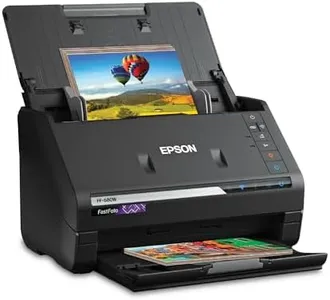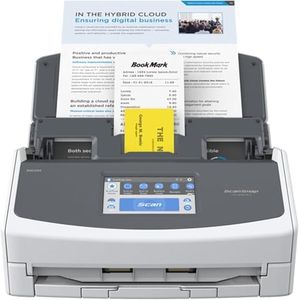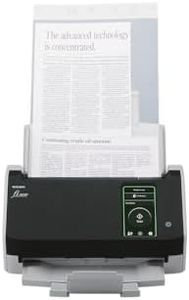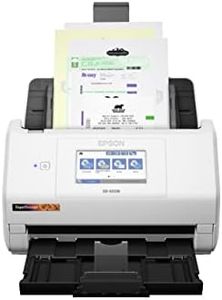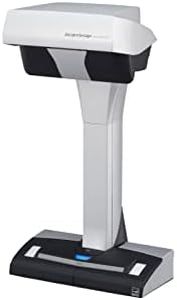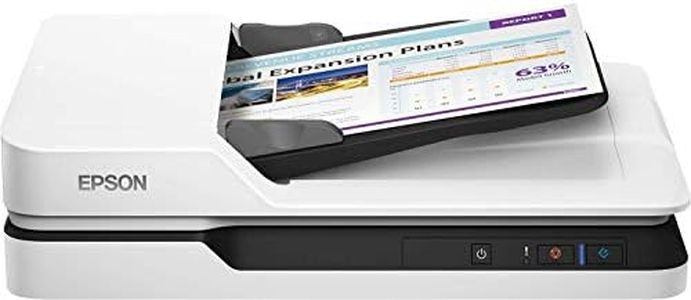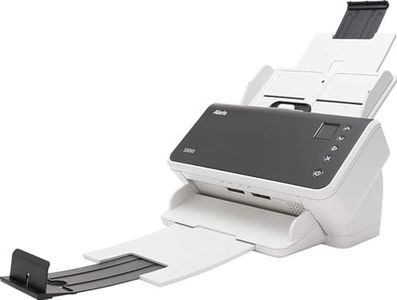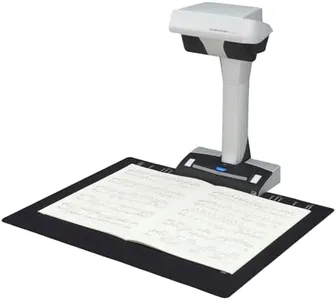We Use CookiesWe use cookies to enhance the security, performance,
functionality and for analytical and promotional activities. By continuing to browse this site you
are agreeing to our privacy policy
10 Best Multi Page Scanners
From leading brands and best sellers available on the web.Buying Guide for the Best Multi Page Scanners
When shopping for a multi-page scanner, you want a device that can handle large scanning tasks efficiently and reliably. These scanners are designed for processing stacks of documents—making them great for offices, schools, and anyone who needs to digitize paperwork regularly. It's important to understand what makes one scanner different from another so you can pick one that matches your needs, whether you scan documents daily or only occasionally.Scanning Speed (pages per minute, PPM)Scanning speed refers to how many pages the device can scan in one minute, usually measured as PPM. This is important if you regularly scan large batches of documents. Lower PPM (up to 20 PPM) suits those with occasional scanning needs, while mid-range (20-40 PPM) is good for moderate use. High PPM (40 or more) is best for businesses or heavy-duty tasks where you need quick turnaround times. Choose a speed that matches the volume of your usual scanning jobs to avoid frustration and unnecessary waiting.
Automatic Document Feeder (ADF) CapacityADF capacity tells you how many pages the device can hold in its tray for automatic scanning. A small ADF (20-50 sheets) works for infrequent or small scanning tasks. Medium (50-80 sheets) suits moderate users, while a large ADF (over 80 sheets) benefits those who regularly scan long reports or stacks of forms. If you handle large or mixed documents often, a bigger ADF reduces the need for constant reloading.
Duplex ScanningDuplex scanning means the scanner can process both sides of a page automatically in one pass. This feature is crucial if you often have double-sided documents, as it saves time and effort compared to flipping pages manually. If you only scan single-sided papers or rarely deal with double-sided pages, you might not need this. However, for busy offices or regular home use, duplex scanning can make your workflow much faster and easier.
Optical Resolution (DPI)Optical resolution, measured in DPI (dots per inch), affects how clear and sharp your scanned images will be. Lower DPI (up to 300) is fine for basic text documents where clarity isn’t critical. Medium DPI (300-600) works well for documents with small print or some graphics. High DPI (600 and above) should be chosen if you plan to scan photos or documents with fine details. Match the DPI to the type of documents you handle most often—text, mixed media, or high-detail images.
Connectivity OptionsConnectivity refers to how the scanner links with your computer or network. Options may include USB, Wi-Fi, or Ethernet. A basic USB connection is suitable for personal use with a single computer. Wi-Fi is convenient for wireless scanning and suits shared environments or mobile workspaces. Ethernet is for reliable, fast connections in office networks. Choose connectivity that matches your setup and how many people will need to access the scanner.
Supported Scan SizesThis spec lets you know what sizes of documents can be scanned—common sizes are letter, legal, and sometimes larger or specialty formats. If you only ever scan regular documents, standard size support is enough. If your work involves receipts, business cards, or oversized pages, look for a scanner that supports multiple or custom sizes. Pick based on the range of documents you expect to scan.
Paper Handling and Media TypesPaper handling indicates which media types (plain paper, card stock, receipts) and thicknesses the scanner supports. Some devices are better at handling fragile or odd-sized documents. If you scan only standard office documents, most scanners will suffice. If you have varied materials, seek a scanner that supports mixed media and offers settings to adjust for thickness or delicacy.
Software FeaturesSoftware features cover things like automatic image enhancement, OCR (optical character recognition), and file management. OCR lets you convert scanned images to editable text files, which is useful for searchable documents. Automatic enhancements can improve image clarity, crop edges, or straighten pages. Consider what type of digital documents you’ll need and how much automation or accuracy you want in the conversion process.
